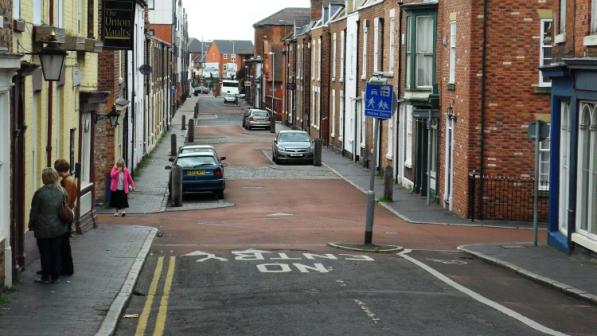Home Zones

Headline message
- While roads have a transport function, it is important to remember that they also intersect local communities. In other words, they are places where people live and work and where children play too.
- Home zones help communities reclaim their local streets from motor traffic and stop them from becoming rat-runs.
Important!
Please note: in July 2020, the Department for Transport published new guidance on cycle infrastructure design (LTN1/20). We will be revising all our advice, policy and materials on infrastructure in the light of it as soon as possible. This exercise will include reviewing this page.
Please also note existing cycle infrastructure design guidance for London, Wales and Scotland (revision due). Plus, technical guidance for Local Cycling and Walking Infrastructure Plans (LCWIPs, England).
Policy key facts
- Home zones are mainly created by reducing the dominance and speed of cars and other vehicles by a variety of features (e.g. speed limits, traditional traffic calming, or planters, seats, trees etc). Typically, these streets do not carry large volumes of traffic, are short in length and the changes are supported by the local community.
- Although home zones can promote road safety, the main benefit is that people start looking at streets differently. It becomes clear that the space is not exclusively for vehicle use, but can cater for a much wider range of community activities - playing, chatting, gardening etc.
- The Government's planning policy for England (National Planning Policy Framework, March 2012), says that developments should (amongst other things) be located and designed to "create safe and secure layouts which minimise conflicts between traffic and cyclists or pedestrians, avoiding street clutter and where appropriate establishing home zones".
Cycling UK view
We are currently revising and updating our detailed views on all aspects of cycling infrastructure and these will be published in due course. For general principles, please have a look at our 'overview' briefing on cycle-friendly design and planning.
The following is an extract from our Policy Handbook (March 2004):
- Local authorities should use their powers under the terms of section 268 of the Transport Act 2000, or section 74 of the Transport (Scotland) Act 2001, to designate home zones where the community requests it.
- When designing home zones, authorities and planners must consider the needs of cyclists, avoiding where possible design which creates pinch points or chicanes (see also our page on traffic calming).
See The Chartered Institute of Highways & Transportation's guide Home Zones in Residential Areas
2012-03-30 00:00:00 Europe/London


